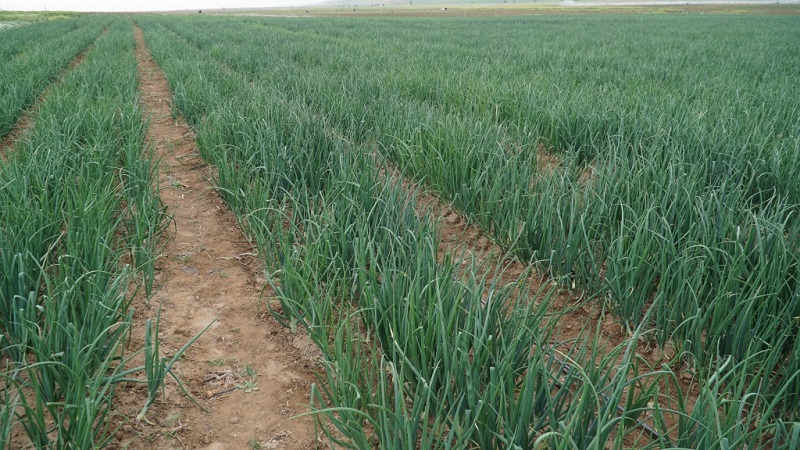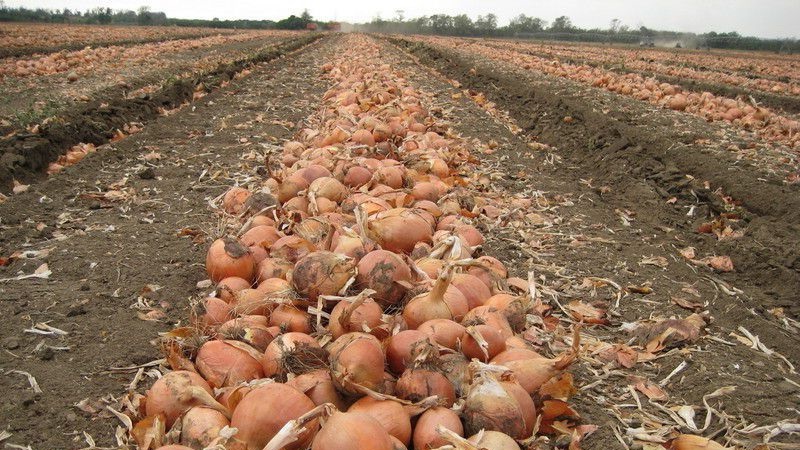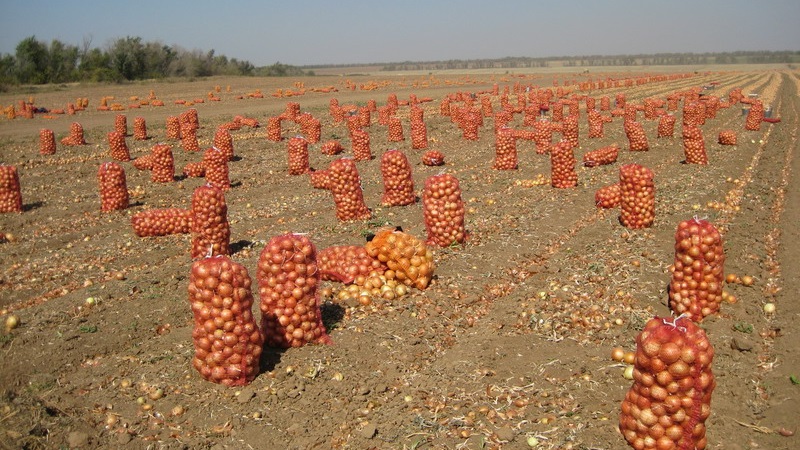What is the yield of onions per hectare and how to increase it
Onions are used in many dishes of the daily diet. Onions are grown on an industrial scale and in private gardens and farms. The yield of this indispensable vegetable depends on the care and growing conditions.
The content of the article
Average yield of onions per hectare
The yield of onion sets in different regions varies from 40 to 150 centners per hectare, sometimes indicators reach 200 centners per hectare. Before storage, the sets are sorted by size and the culling is separated - bulbs over 3 cm in diameter.
Onions are harvested after the leaves fall, the necks dry out and dry scales are formed... During rainy weather, the vegetable is harvested with unripe leaves, preventing secondary growth of the root system. Farmers give the unripe heads for sale for quick consumption, the rest are sorted for rejection and marketable bulbs.

Onions for herbs begin to be harvested 20-27 days after plantingwhen the feathers reach 33-45 cm. Such a yield can be 15-20 kg per 1 m².
What determines the indicator
Yields are affected storage conditions and processing of bulbs before planting.
Important! Low temperatures during storage of seedlings become one of the reasons for the formation of arrows on the feathers.
It is recommended to store the onion at a temperature of about + 20 ° C for several weeks before planting., and before planting, hold for 10-15 hours at a high temperature - up to + 40 ° C. A battery or heat gun is used for heating.
Before planting for disinfection and prevention of fungal diseases bulbs withstand for about half an hour in a solution of dark pink potassium permanganate. After washing, the onions are planted.
The bow is resistant to cold weather... It can tolerate spring and autumn frosts, but seedlings die at temperatures of -3 ... -4 ° C. The optimum temperature for the growth of greenery is + 16 ... + 27 ° С; it is able to withstand frosts down to -8 ° С and heat above + 30 ° С.
Onions are picky about light and need intense lighting... And especially when grown from seeds. Plants consume the most moisture in the first growing season; dry and hot weather is needed to ripen the bulbs. Soil fertility is one of the key points. Fertilized and weed-free areas are allocated for this culture. After digging, the soil is fed with urea, potassium chloride and manure.
Reference. After fertilization, the soil should have a reaction close to neutral (pH 6.4-7.9).
Sow onions according to the rules of crop rotation... Any type of crop grows well where corn or cabbage was planted last year. Onions are planted in their original place no earlier than three years later.
Farmers use drip irrigation to optimize the irrigation process... Turning on the hydraulic valve for 15 minutes a day increases the crop yield by 2-3 times compared to conventional sprinkling.

How many onions can be harvested from 1 hectare, depending on the growing region
Onions are grown in all regions of the country - from Siberia to Krasnodar Territory... Taking into account the peculiarities of the region, varieties and hybrids are chosen that correspond to the type of local soil, with a suitable ripening period, taste properties, and bulb sizes.
The most "onion" regions of Russia are Volgograd and Astrakhan regions... The share of areas allotted for sowing crops in these areas of the total onion plantations in the country is 24.7% and 14.6%, respectively.
Here, the yield of onions averages from 12-15 to 25-30 tons per hectare.... The maximum can be collected 70-80 tons per hectare.The average seed yield is 8-9 tons per hectare, and the maximum yield is 13-18 tons per hectare.
How to increase the yield of onions
To increase crop yields, several rules are followed.:
- The soil is fed with potassium-phosphorus fertilizers. This increases the size of the bulbs and has a positive effect on the flavor and abundance of the crop.
- If there is an excess of nitrogen in the soil, the density of the bulb will decrease and there is a danger of rotting. Therefore, organic matter is not used for feeding.
- Plants are not planted in swampy, clayey and acidic soil. To reduce acidity, lime is added to the soil at the rate of 300 ml per 1 m².
- Onions are not planted after root crops and potatoes, nightshades, and other bulbous. Optimal precursors are cabbage, parsley, pumpkin and radish.
- Legumes are not planted next to onions.

The best varieties in terms of yield:
- Early farmer. From the moment of emergence to lodging of the feather, 80-90 days pass. An annual variety grown from seeds.
- Radar... Simple and unpretentious in cultivation, suitable as a winter crop. The harvest of this variety is abundant, well stored and transported.
- Karatalsky... The early-ripening variety is characterized by high yields even in arid climates and with low soil fertility.
- Centurion... It is considered the best among the Dutch varieties. Cultivated in hot and cold climates.
- Hercules... The advantages of this variety are long-term storage without significant loss of taste and abundant yield - up to 10 kg per 1 m².
- Chalcedony... The advantage of the variety is the high content of carotene, folic acid and essential oil. Under favorable conditions, up to 5 kg are harvested from 1 m².
Experienced gardeners use some tricks to increase yields... For example, plants are watered abundantly only until the bulbs form. After that, the watering rate is reduced, and three weeks before harvesting, they stop completely. The soil in the beds is mulched so that the soil layer does not crack and compact.
Attention! After the second thinning, the onions are fed with infusion of mullein or bird droppings.
Onion sets, planted before winter, are grown in high ridgesso that in spring it does not get wet from melt water.
Conclusion
Onions are an important vegetable crop in the Russian culinary tradition. In addition, the vegetable has medicinal properties. Growing onions is not a very laborious process, but in order to get a good harvest, it is important to follow the rules of agricultural technology, use suitable varieties and take a responsible approach to storing planting material.